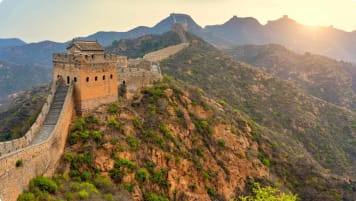Highlights of Iran | Persepolis
Highlights of Iran | Persepolis Persepolis was once the capital of an empire that ruled a territory that covered Egypt to India. It is one of the wonders of the ancient world. The Achaemenid Kings…
5 Jan 20 · 6 mins read
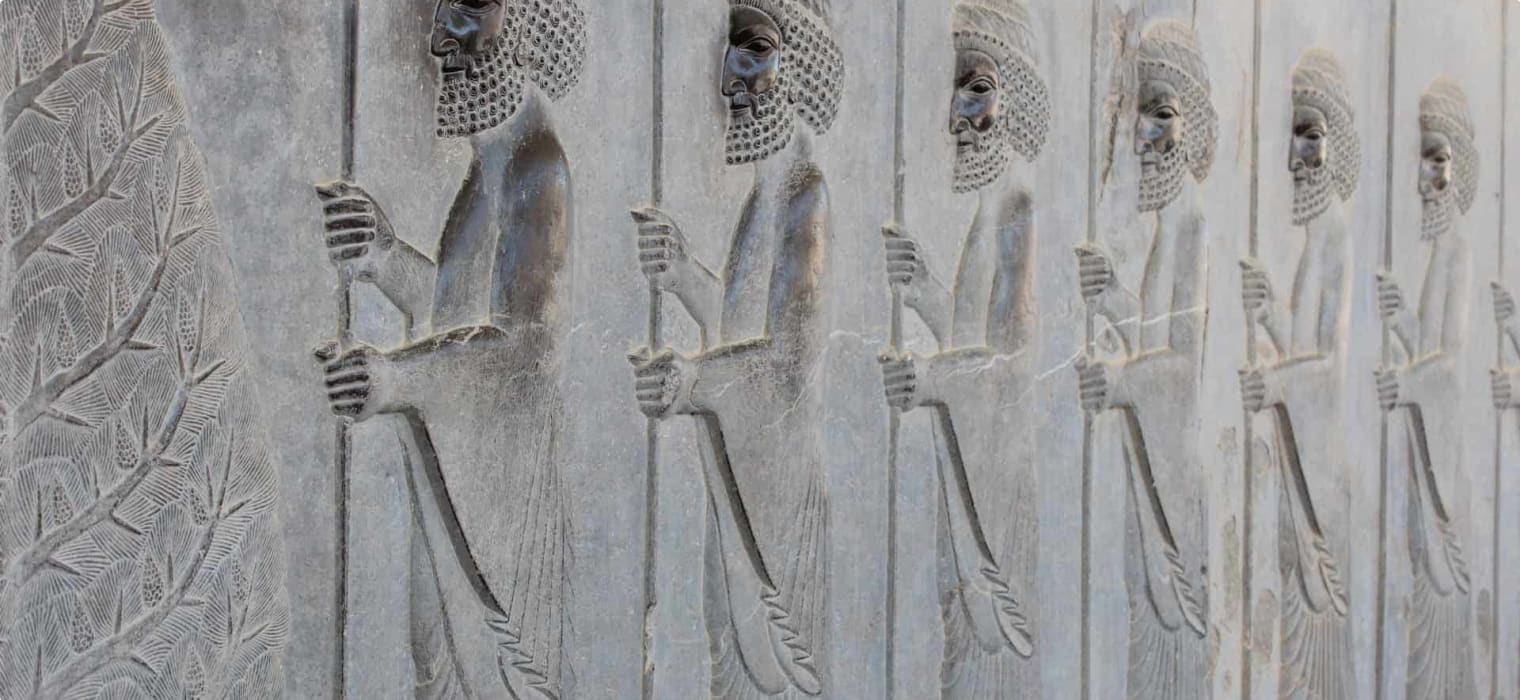
Highlights of Iran | Persepolis
Persepolis was once the capital of an empire that ruled a territory that covered Egypt to India. It is one of the wonders of the ancient world. The Achaemenid Kings of the ancient Persians sought to immortalise their power by building magnificent palaces, terraces and other monuments. Today, in the remarkably intact ruins of Persepolis, the grandeur of the ancient city is palpable.
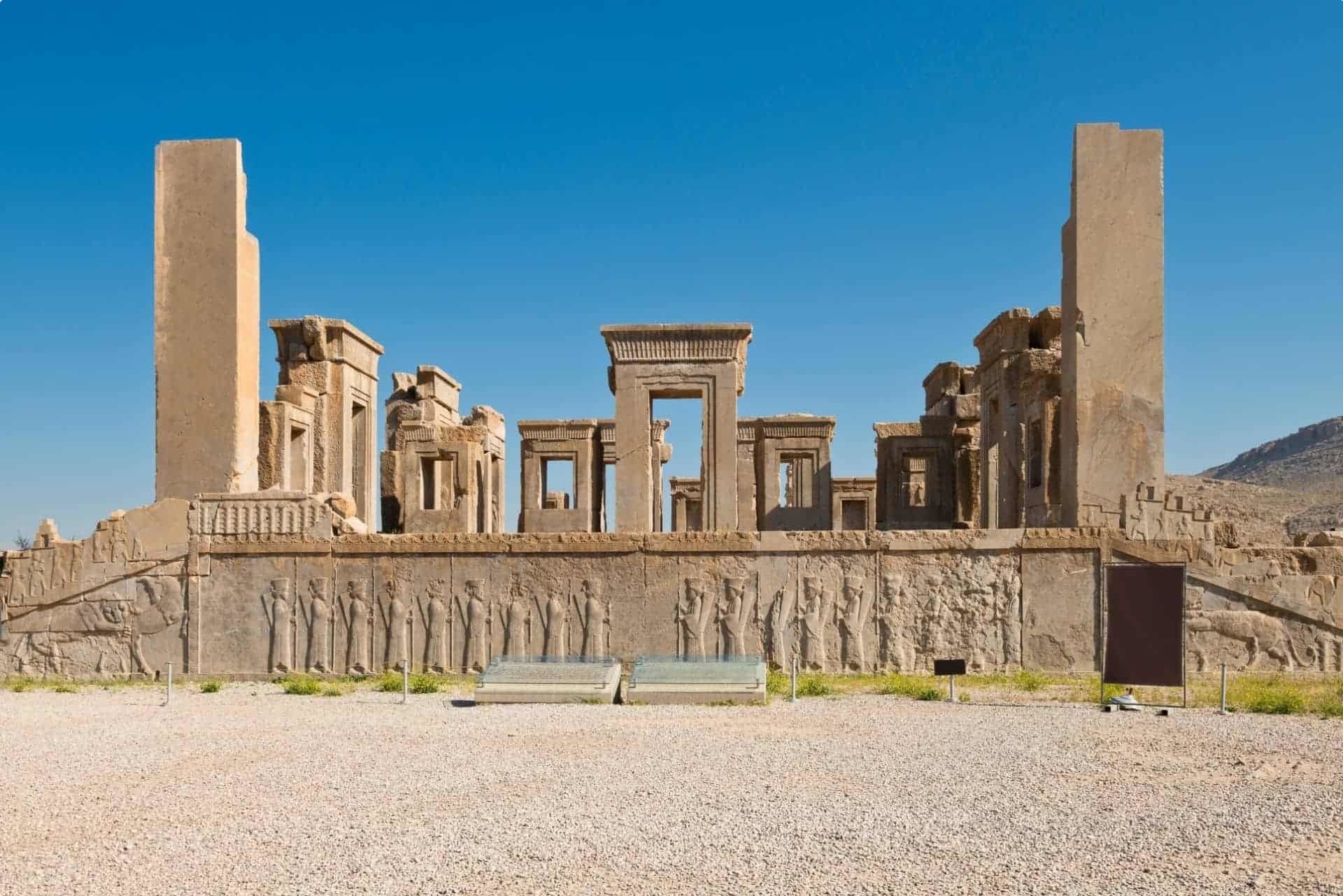
This article provides a guide to exploring the highlights of Persepolis. If you’re particularly interested in Iran, you may want to look at some of our other articles, linked at the bottom of this post.
Guide to the ruins of Persepolis
Parsa, the ancient city that became Persepolis
The ancient city of Parsa, known to the Greeks as Persai, once occupied the nearby plain. The word meant the City of the Persians – Persai-polis. First the Romans, then later Western historians and writers, continued this tradition. The Iranians developed their own tradition, attributing the ancient monuments to Jamshid, a legendary paragon of sovereignty. Jamshid subjugated the deves (demonic peoples), who built him palaces of stone and bore him from one to the other. When Jamshid built Persepolis, he also established the great festival of Nowruz (New Year’s Day), on the spring equinox. Today, Persepoli Iranians refer to Persepolis as Takht-e Jamshid (Jamshid’s Throne), and Nowruz is arguably Iran’s most important annual celebration. The importance and quality of Persepolis’s monumental ruins make it a unique archaeological site and a highlight of our tour.
Persepolis, Iran

Darius I (Darius the Great), the Archaemenid King, founded Persepolis in 518 BCE. Darius built his extraordinary citadel on an immense half-artificial, half-natural terrace covering 125,000 square metres. The fortified citadel has both ceremonial and administrative buildings. It once dominated a sprawling residential complex of palaces on the plain below. Today, it’s a vast array of magnificent ruins conveying the splendour of Achaemenid Persia. Embraced protectively on the east by a rugged chain of hills, it stands on a platform approachable only from the west by a monumental stairway lined with a jigsaw of colossal stone blocks.
A UNESCO World Heritage site
Persepolis is renowned for its monumental architecture, urban planning, construction technology and art. The royal architects, first under Darius the Great and then his successors, Xerxes (486-66 BCE and Artaxerxes I (466-24 BCE), used slender columns and wooden lintels to support roofs covering large areas. The columns have elaborate capitals, typically featuring two kneeling bulls placed end to end. Their joined backs then form the supports for the ceiling beams.
Persepolis survived until 331 BCE, when Alexander the Great arrived. Alexander and his army looted the treasury and, contrary to his usual policy, burned the complex to the ground. This unusual step is often attributed to retaliation for the Persians’ sacking of the Acropolis in Athens. Although Alexander’s historians wrote of the total destruction of Persepolis, significant areas of the centre remain – along with some of the greatest sculpture found in Iran today.
The Gate of All Lands
The original entrance to Persepolis is via a 14m long staircase at the southern end of the site. To the right, a huge block bears four different inscriptions on the nature of the great city. The first two, written in Old Persian, proclaim the country belongs to Darius the Great by the grace of Ahura Mazda, “greatest of the divine beings”. The third, written in Elamite, lists the 25 countries subject to the king; while the fourth, written in Babylonian, acknowledges the work done by the artisans of the subject nations. Today, visitors enter the site via the Gate of All Lands. This is a square hall accessed via a monumental double-reversed staircase of limestone blocks with unusually short steps. Built to accommodate large groups of royal guests, these staircases are popularly thought to allow entrance to the city via horseback.
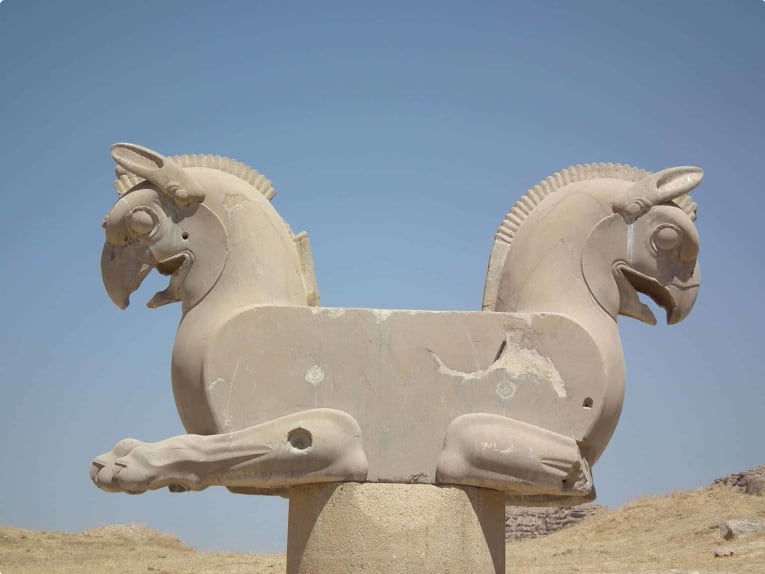
Two enormous winged bulls still support the side pillars of the eastern doorway to the Gate of All Lands. Their heads and forequarters project out from the pillars in high-relief sculpture, while their bodies are in low-relief on the inside of the pillars. These winged bulls are iconic features of Assyrian art (several are now in the British Museum). However, at Persepolis in Iran they are shown with four legs rather than the five given to their Assyrian counterparts. An inscription proclaims this as the ‘Gate of All Nations’ – the heart of an empire. Once at the Gate of All Lands, visitors sat on a stone bench running around the walls while they waited for their audience with the king. A stepped platform opposite the southern doorway allowed the Chief Usher to observe the royal throne and audience in the adjacent Apadana, Darius the Great’s audience palace.

The Apadana: room for 10,000 guests
The enormous central hall of the Apadana could accommodate 10,000 guests. Its vast roof rested on heavy cedar beams supported by columns of different styles, almost twenty metres high. The most elaborate type has a bell-shaped base carved to resemble an inverted lotus. Egyptian style palm frond motifs crown the shafts, which have four sets of vertical Ionian volutes. At the top, paired sculptures of recumbent lions, bulls and griffins provide the saddles on which the ceiling beams once rested.
Today, the most glorious sight at Persepolis is the two double-reversed stairways of the Apadana. They display nearly identical sculpted representations of Achaemenid dignitaries, guards, staff-bearers and ushers. The central tableau features the larger-than-life size sculpture of the King, enthroned under a canopy with attendants on either side. Behind him stands the Crown Prince, before him kneels an official. Three registers of Persian nobles, equestrian officials and spear-holding guards appear on the façade behind. The nobles wear either military and courtly dress, symbolising the dual function of the Persian elite.
We come bearing tribute
The Apadana stairway reliefs are a complex metaphor of imperial harmony. Carved in relief on the wing before the king are delegates from all the subject lands of the empire, including Egypt, Armenia, Cappadocia and the Arabs of Jordan and Palestine. Each bears a lavish gift, and the leader of each delegation is grasped by the hand by a Persian usher, anticipating the signal to move into the royal presence. The ushers wear either Median or Persian costumes, signifying the unification of ancient Medea and Persia, yet it is the gifts each delegate bears that are perhaps the most interesting. The Assyrians of Mesopotamia present a pair of rams, vessels, clothing and water skins; the Bactrians bring vessels, a two-humped camel and the skin of a wild cat. The Elamites present a lioness and her cubs, the latter securely tucked under the armpits of one of the Elamite delegation.
Naqsh-e Rostam
Odyssey’s tour of Persepolis in Iran includes the nearby royal necropolis, Naqsh-e Rostam. These are rock-cut tombs interring Darius the Great and some of his successors. When the Sassanians arrived in the third century, they carved magnificent bas-reliefs into the cliffs near the royal tombs. This was done to pronounce themselves the direct successors to the Achaemenid empire and legitimise their rule. One of these reliefs depicts the triumph of the Sassanian king, Shapur I, over the Roman Emperor Valerian, who later died in captivity at Bishapur. Each tomb once contained a sarcophagus. Whether they contained the bodies of the kings or just their bones is unknown.
Visit Iran with Odyssey Traveller
Odyssey Traveller offers two fully escorted trips to Iran each year, one in spring and one in autumn. We begin our tour in bustling Tehran, where we take in colourful traditional art and handicrafts at a number of museums. We then head to several of Iran’s ancient cities, Zanjan, Takab, and Hamadan, each home to important UNESCO World Heritage Sights. Our trip also visits Esfahan, regarded in the Middle Ages as ‘half the world’, and still Iran’s most beautiful city. We also head to the stunning desert city of Yazd, and Shiraz, famous as the ‘city of poets’, from which we make a day trip to Persepolis, capital of Darius the Great.
Our trip to Iran is designed for mature and senior travellers, either couples or those making their journey as a solo traveller. Our groups are always led by an experienced tour operator and local guides, who share the culture and history of Iran with you. We understand that the local cuisine is a vital part of culture, and make sure to include meals at authentic local restaurants.
For your Iran holiday, think about joining an Odyssey tour. We promise a memorable experience of this fascinating country. To see the full itinerary for our forthcoming tours click here, and please call or send an email if you have further enquiries.
Updated on January 6, 2020
Articles about Iran published by Odyssey Traveller:
- Questions About Iran
- Visiting Iran
- Tehran Through Time
- Safavids in Persia
- History of Persian Carpets
- Beauty and Artistry in Iran: Persian Gardens and Mosaic Tiles
- Persepolis in Iran, a famous place on any escorted small group tour
- Thirty must see places when visiting Iran
- Ten Books to Read About Iran
- Isfahan, Iran
- Shiraz, Iran
For all the articles Odyssey Traveller has published for mature aged and senior travellers, click through on this link.
External articles to assist you on your visit to Iran:
Related Tours
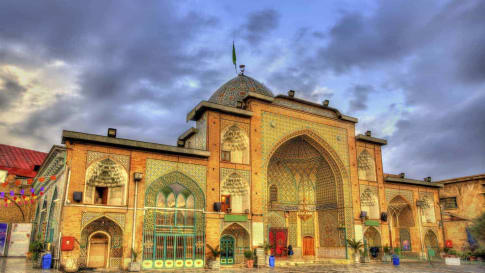
17 days
Sep, Nov, AprIran Culture and History Escorted Small Group Tour for seniors
Visiting Iran
Unlike its neighbours to the west and northwest, Iran had not adopted Christianity and it was the explosive spread of Islam and its ready adoption, without the Arabic language or customs, which helped unite the culture and greatly enrich Persian heritage. This small group tour program includes the great cities of Iran, historic sites, mosques, gardens, bazaars and teahouses for couples and solo travellers.
From A$11,825 AUD
View Tour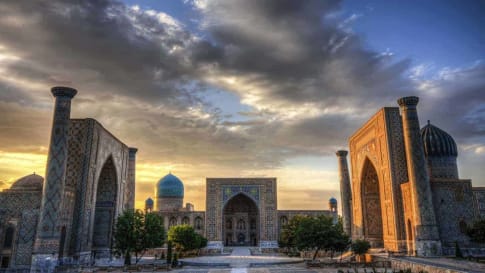
29 days
Aug, May, SepTravel on the Silk Road with Odyssey Traveller | Small Group Tour for Seniors
Visiting China, Kyrgyzstan
The Silk Road is an ancient trade route linking China and Imperial Rome through Central Asia. Few areas in the world remain as unexplored or offer such richness in terms of ancient and modern history, culture, and scenic diversity as Central Asia. Our Small group Silk road tours itinerary explores the Road through remote deserts and mountainous environments as we visit key sites between Xi'an and Bukhara.
From A$19,685 AUD
View Tour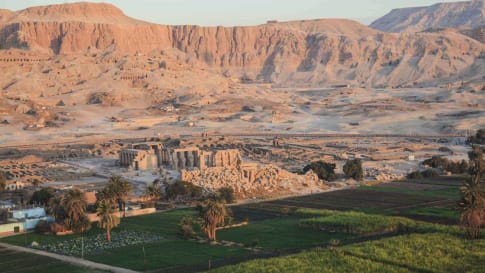
18 days
Nov, JanEgypt tour: escorted small group history & cultural tour of Egypt
Visiting Egypt
Our small-group program, designed for senior couples and solo travellers, offers a rich journey through Egypt's past and present. You'll explore modern marvels like the Aswan Dam and immerse yourself in pivotal sites such as Tahrir Square, both key to understanding Egypt’s enduring influence on civilization. This tour is proof that Egypt remains a vital crossroads of history and culture. We explore Egypt's fairy-tale natural beauty, its ancient history, and Imperial heritage, its World Heritage Sites, and world famous cities, all with some truly spectacular scenery along the way. For those seeking an even deeper experience, we also offer opportunities to extend your travels with our tours in Morocco, Jordan, or Tunisia before beginning your Egyptian adventure.
From A$12,950 AUD
View Tour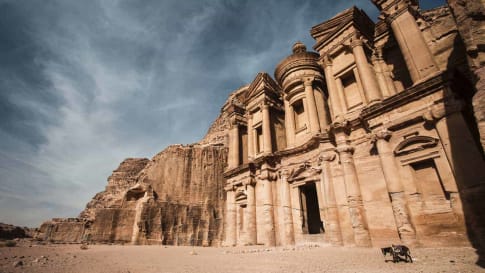
9 days
Jan, OctAncient History of Jordan | Escorted Small Group Tour
Visiting Jordan
Explore Jordan, visiting its capital city, Amman Jordan, the ancient Desert Castles, Petra and the Dead Sea on a small group package tour for mature and senior travellers travelling as a couple or Solo.
From A$6,750 AUD
View Tour
